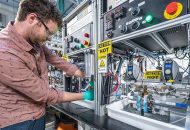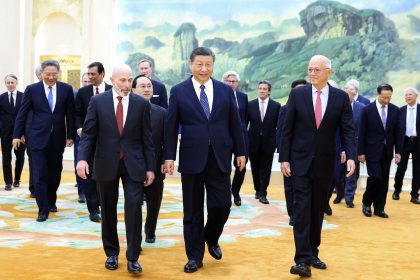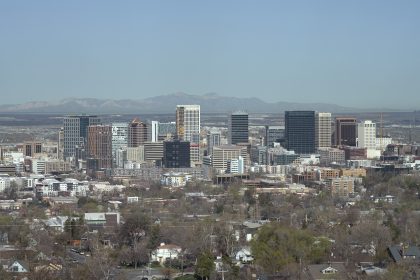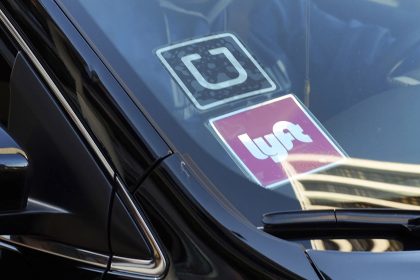To Make Transportation More Climate-Friendly, Look No Further Than Rail
COMMENTARY

The movement towards a more sustainable future has become a primary driving force in decision-making, both in Washington and in business. In April, the Biden administration committed to taking meaningful steps in fighting climate change, announcing a new goal of slashing U.S. greenhouse gas (GHG) emissions in half by 2030, further bringing U.S. climate responsibility into the forefront. Policymakers, climate experts, and engineers will debate the feasibility of this ambitious goal and the best path to make it achievable.
This sense of urgency is with good reason: major U.S. industries cannot, and must not, ignore today’s climate threats. With the transportation sector representing 28% of the nation’s total GHG emissions, real-world solutions to reduce the carbon footprint of this sector are essential to our overall climate goals.
At the heart of the U.S. transportation network lies freight rail, an essential—but often overlooked—part of the climate solutions. Further leveraging this network, which contributes only 2.1% of transportation emissions, should be part of a broad climate plan.
As we look to address climate change, the nation is also looking for ways to power an economic recovery and get Americans back to work. Freight rail is a win-win on both fronts, capable of moving goods today while meeting the changing demands of tomorrow.
Freight movement does not have to be an afterthought in the climate change discussion; rather, it can help drive it. Rapid supply chain transformation is already underway: as the OECD predicts, surface freight movements via road, rail, and inland waterways are projected to grow 175% by 2050.
Freight rail is currently the most environmentally friendly way to move freight by land. If just 10% of the freight shipped by the largest trucks today were instead moved by rail, CO2 emissions would fall by more than 17 million tons. This step forward would be a major one, on par with removing 3.35 million cars from our highways or planting 260 million trees. At the same time, moving goods by rail relieves congestion on the nation’s highways, cutting down on the number of semi-trucks contributing to traffic, idling, and delays.
Railroads continue to get greener, implementing new technologies to improve their fuel efficiency and reduce emissions. In 2019 alone, U.S. freight railroads consumed 656 million fewer gallons of fuel and emitted 7.3 million fewer tons of CO2 than they would have with their fuel efficiency levels in 2000. Railroads are proud of this progress, but more work remains. In a new analysis from the Association of American Railroads, the industry reinforces its commitment to driving meaningful climate change progress, but calls upon policymakers to give them the support they need along the way.
New proposals show how freight rail can make further progress using well-designed, market-based solutions. The right policies can incentivize a shift to lower-emitting modes of transportation, like rail, while also addressing persistent policy challenges in transportation. An emissions surcharge based on a vehicle’s fuel efficiency, for example, would cut down on transportation emissions while simultaneously encouraging use of climate-friendly transportation modes and invest those funds in maintaining critical infrastructure.
There is more to be done than simply moving freight from a truck to a train, however: long-term progress hinges on next-generation solutions that can only be accomplished through additional investments in initiatives like carbon capture, utilization, and storage, and research on initiatives like alternative fuels and advanced battery storage technologies.
Of course, passenger rail is the most environmentally friendly way to move people over land. Recently, Amtrak announced each ticket sold for the Northeast Corridor will show passenger’s carbon-emissions savings compared to flying or driving. Capitalizing on passenger rail’s potential carbon savings depends upon viable, competitive freight railroads which own and maintain more than 70% of train miles where Amtrak operates across the country. Balancing dependable passenger service with the demand for reliable, efficient freight service remains central to both of our transportation and climate goals.
The pandemic and recent natural disasters have showcased the importance of having a freight rail network that is competitive, reliable, and sustainable. The industry stands ready to be part of the solution. As the Biden administration and Congress work to achieve our nation’s climate goals, freight rail should be seen as a link between where we are now and where we want to be, especially as freight demand quickly increases. By embracing rail, policymakers are embracing a greener future.
Ian Jefferies is president and CEO of the Association of American Railroads. As AAR’s president and CEO, which is a role he took on in 2019, Jefferies advocates for and works with member railroads to ensure the long-term viability of America’s railroad industry. Jefferies has more than a decade of experience working in government. From 2009 to 2013, he served as a Senior Policy Advisor to the Chairman of the U.S. Senate Committee on Commerce, Science and Transportation, and from 2013-2019 he was AAR’s Senior Vice President of Government Affairs.






















